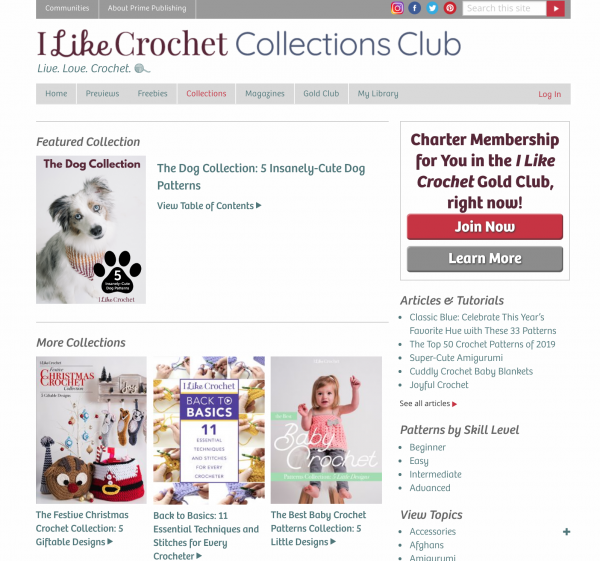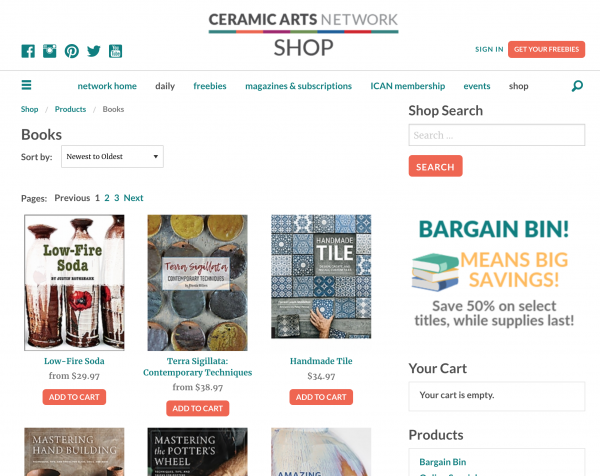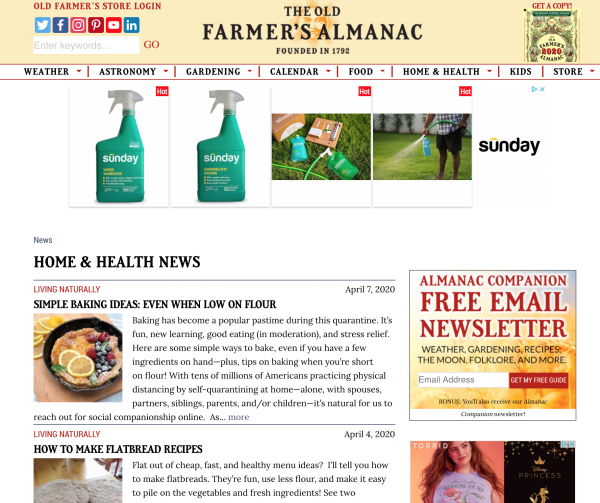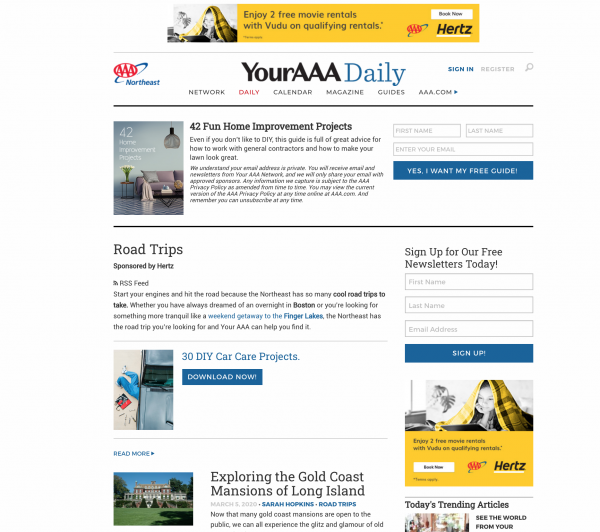
If you’ve considered starting an online magazine, or are a legacy print magazine considering going digital, you’ve asked this question: How do online magazines generate revenue? And the answer is that the successful ones use a multiplatform and multi-revenue approach. A single online magazine with no print counterpart, no website model, and no multiplatform ad package won’t last long.
Like a good investor, you need a diversified portfolio. You can’t bet on a single stock like you shouldn’t bet on a single platform for your product.
Online magazine business models can be broken down into two main categories: conventional business models adapted to the Internet and Internet-specific business models.
There’s an array of conventional business models, ranging from direct sales to the brick and mortar business model. These businesses may have started in the physical realm, with many ending up online. These models did not develop on the Internet, although they have transitioned to this medium—and so can any publisher.
Internet-specific business models are ones that did not, or could not exist without the Internet. Many of these revolutionized the way online businesses generated revenue, as many traditional business models operating on the Internet also adopted some of these Internet-specific models.
The digital world offers an array of revenue models for online magazines, which, in turn, have their own subsets of revenue-generating models. This means revenue can be generated in many ways for online magazines. As you read on, the intricacies should become more understandable.
[text_ad]
Transitioning from online magazine to multiplatform magazine
If the answer to how online magazines make money was simply “selling subscriptions,” then this article would be quite short. As we’ve mentioned above, just selling online magazines isn’t how most publishers generate most of their revenue.
Over the past two decades, my team and I have guided the transformation of more than 300 magazine and newsletter brands into niche media empires. In every case, we dramatically expanded the number of revenue generation systems in their media mix. While the process is complicated, it’s not rocket science. It merely requires a systematic approach to adding each new revenue generation system to the organization’s larger integrated business model.
Every time my team and I sit down with a new client, we review how each of the following revenue generation systems might be deployed for their organization. Let’s dig in.
Selling All-Access Memberships
If your primary source of digital revenue is online magazine subscription sales, then your online magazine business plan probably isn’t very long. The publishers we work with all have a best-selling offer, and I can promise you it’s not the lone subscription to their magazine. Rather, the most successful publishers we know all have an all-access pass membership they sell, which offers a number of their premium products under one roof: magazines, books, videos, courses, and anything else they can bundle.
Food Gardening Network is one such example. When a user wants to subscribe to the magazine, they get an all-access offer which gives them access to the magazine complete with how-to videos, content previews, and premium collections.

Having this product can do one of two things. If you have a print magazine as well, you can price everything the same, something Yankee Magazine has tested. Where all the products are priced the same, it can increase conversion rates because the user came in thinking they were getting a subscription to a magazine, which they may have bailed on, but now they are confronted with a much better offer for the same price. In another case, where the all-access pass is higher priced, it can increase profits by convincing visitors to convert to a product that has higher profit margins than the one they came in looking for.
Selling Digital Memberships
Another product most of the publishers we work with now have in their revenue arsenal is a club. Usually a club features a collection of one type of product, and the convenience factor of online clubs makes this a hugely viable source of digital revenue.
A good example of a club is from I Like Crochet. They have a “Collections Club” which includes carefully curated collections of designer crochet patterns. This club features 50+ crochet patterns, from scarves and shawls to afghans and baby items, and they are hand-selected by the editorial team. I Like Crochet also has the all-access membership mentioned above, and the Collections Club is included when someone becomes a member.
Selling Live Events
Another subset of online publishers will also generate revenue through user-supported, unsponsored, or only partially sponsored in-person and digital events. Tickets used to be sold at box offices, or by will call and mail to get tickets. Now they’re purchased online and printed on home computers, or scanned with a QR code. Some publishers also generate revenue through sponsored live events, where sponsorship packages are sold in person, online, and through the phone, making this a very multiplatform product and revenue stream.
The Program on Negotiation at Harvard Law School is an example of an online publisher who produces user-supported, unsponsored events. In the fall, they host their multi-day Negotiation & Leadership program and their Negotiation Master Class. In the spring and summer, they host those programs again, along with the Harvard Negotiation Institute. These programs are thousands of dollars to attend and are a significant source of revenue for this publisher. Additionally, they host premium webinars several times per year, featuring the instructors from their in-person programs.
Selling Books and Products
Publishers who have always sold books are also finding success in generating revenue by selling them online. Consumers used to rely on bookstores, but now people are so used to buying books online through Amazon that it’s no big step for them to purchase books directly through publishers, including digital ebook downloads. When the books are digital, this is yet another product we’re seeing publishers include in their all-access membership packages.
The Ceramic Arts Network, publisher of Ceramics Monthly and Pottery Making Illustrated, has always produced books, but only in recent years have they started to sell digital PDF versions of each book. Their online bookstore includes over 70 books on glazing, form, hand-throwing, and a good portion of them can be downloaded.
Selling Programmatic Display Advertising
Another way online magazines make money is through programmatic display advertising, which is the process of automatically buying and selling ads online. The ads are based on the demographics of the publisher, and are tailored directly to the habits of the people who will see them. Rates on programmatic advertising can range anywhere from $0.50 per thousand to $3 or more.
The Old Farmer’s Almanac’s website Almanac.com features one type of programmatic advertising, which is Google Adsense. There is usually a leaderboard above articles, and in the right-hand rail featuring dynamically generated ads. Other publishers use programmatic ads that use an ad-server where advertisers can manually pick and choose which sites they want their ads to appear on, and publishers can choose the price per thousand, or per click, they’re willing to accept.
Selling Native Advertising
Another large segment of online magazine publishers generate revenue through native ads, a revenue stream that has existed since the dawn of print. Multiplatform publishers are in a great position to sell native sponsorship packages that combine traditional print ad placements, digital ad placements, and better opportunities for the sponsor to be part of the story.
Here’s an interesting example of an online magazine publisher selling native advertising, and the importance of testing ads for your sponsors.
Yankee Publishing, publisher of regional magazine Yankee, saw a 72% increase a few years ago when they tested a new “takeover” sponsored email template. When they were simply selling single text ads between articles in their newsletter, the sponsor ads were getting just 227 clicks on average per send. They added a 300 x 250 display ad in the first ad slot of the newsletter to accompany the single text ad, and that increased the number of clicks to an average of 300. Finally, they created an email template that included the display ad for the sponsor in the top ad slot, filled the remaining text ads between articles for the same sponsor, and made the content more tailored to that sponsor. In doing so, they earned the sponsor a whopping 850 clicks on average.

Selling Integrated Sponsorships
Integrated sponsorships are another method online magazines use to make money online. This is a much different mindset than selling a set of ad placements on your homepage. Philosophically, we believe publishers are best served shifting the conversation away from things like impressions and more toward brand scarcity, exclusivity and alignment.
AAA Northeast uses this revenue-generation strategy well. They offer a monthly sponsorship package, which is discounted when a sponsor purchases multiple months, and they also offer a bundle rate when a sponsor agrees to advertise in their print magazine.
For AAA, sponsors buy monthly campaigns. Within that monthly campaign, they receive a custom, SEO-optimized, 1,000-word article that provides high-quality editorial content for their readers while positioning the sponsor as a thought leader in their industry. They also get a dedicated email promotion that’s sent to a large and targeted list of engaged AAA members, exclusive sponsorship of a relevant category on their website, and an in-line, native text ad within their email newsletter that is sent during the campaign month. A bonus perk is that they will capture the name and email address of every member that views the sponsor’s custom story and provide weekly spreadsheets. This is the ultimate package for a sponsor.
If you’re thinking about expanding your legacy magazine business, we’d love to chat about the process of evaluating each of the revenue-generating models above for your organization. I’d also be happy to describe the process we developed for planning, developing, and optimizing a fully integrated, multiplatform niche media business.
How does your online magazine generate revenue? Leave a comment!







